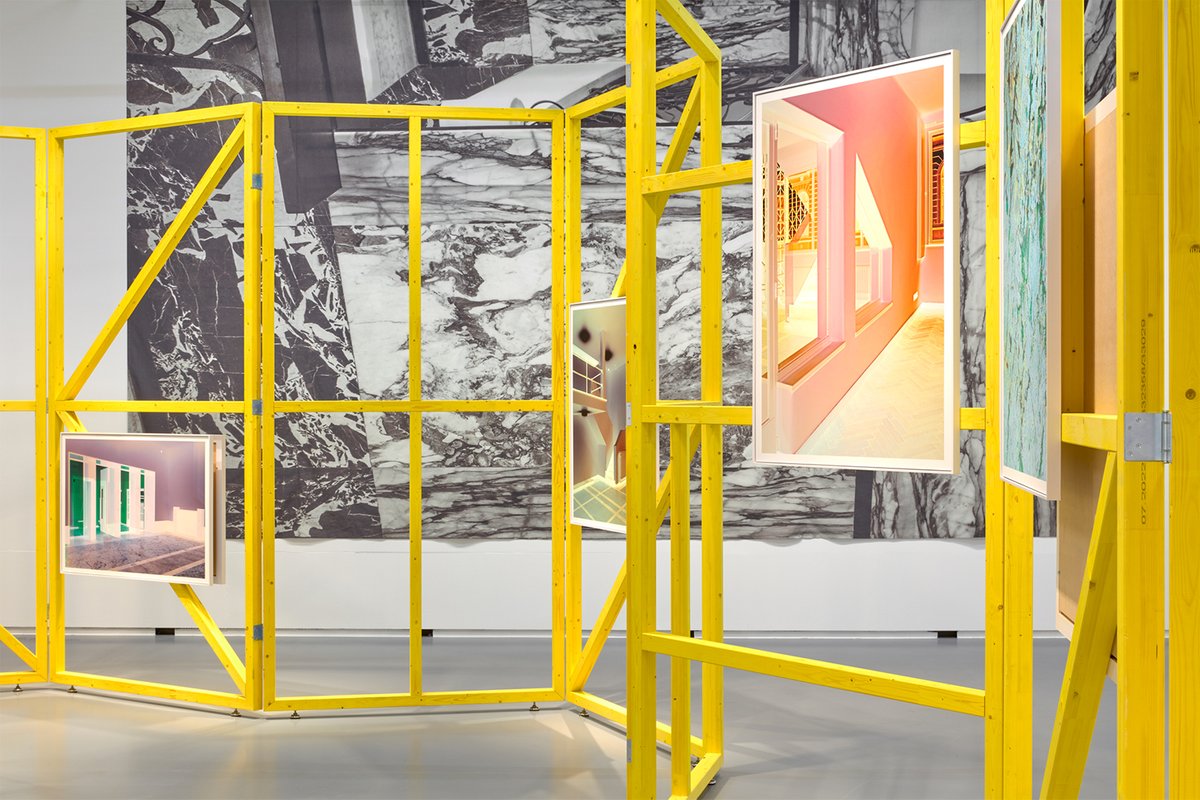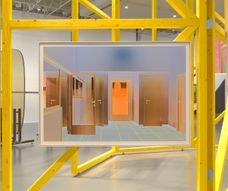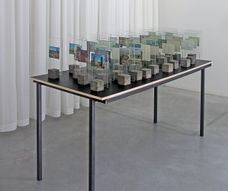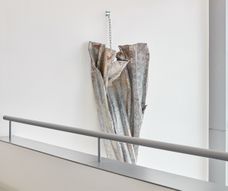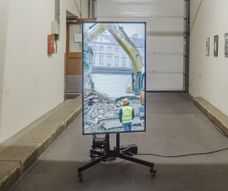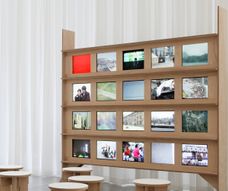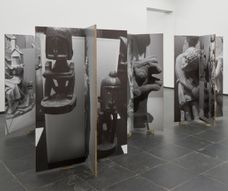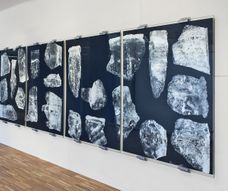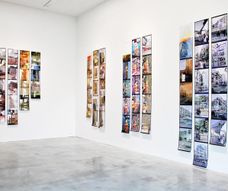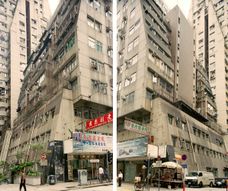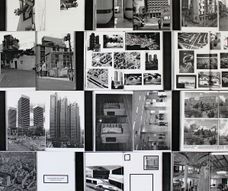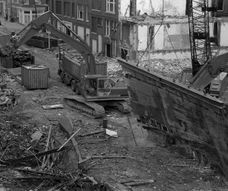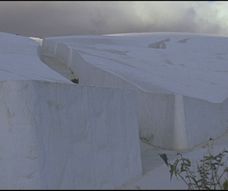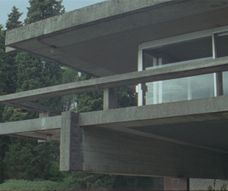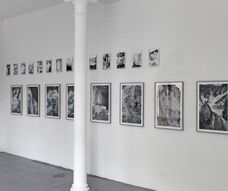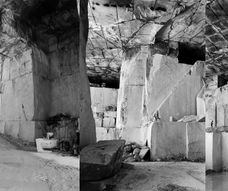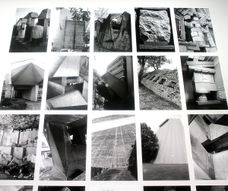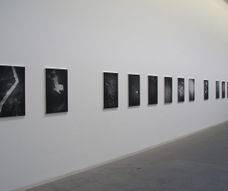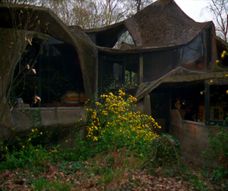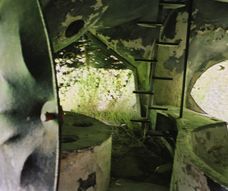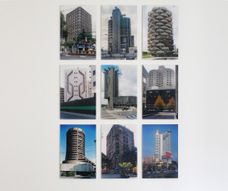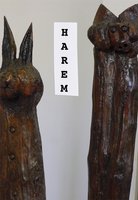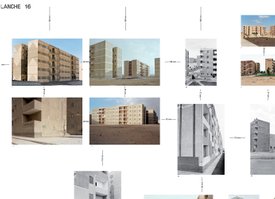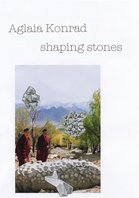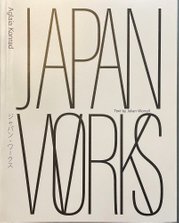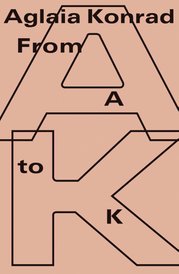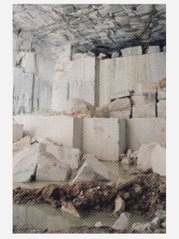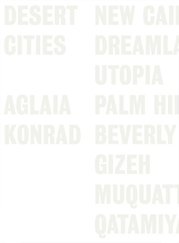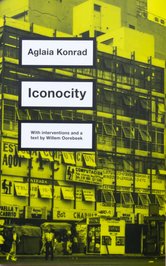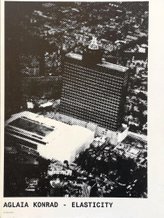AGLAIA KONRAD
Over the last twenty years, Aglaia Konrad has systematically investigated the development of the global metropolis, the expansion of urban agglomerations and the rise of the mega-city in locations as diverse as Sao Paulo, Beijing, Chicago, Dakar, and Cairo. Her practice, which is based on extensive on-site research and an ever-expanding archive of visual material, primarily deploys photography, video, slide projection and large scale photographic installations of blown up photocopies or silkscreens, as well as the publication of artists books in the form of photographic visual essays.
Konrad is interested in probing the social, economic, historical and political parameters that inform and underlie architecture and urbanism, as much as she in interested in exploring the physical presence of architecture and building types, particularly those of modernist genealogy. At the same time she has also examined the infrastructure and sprawling urban networks that cities depend upon - from motorways and junctions, to airports, tunnels, and bridges - drawing our attention to the complex system of signs and codes embedded therein. Focusing on the physical fabric of the urban built environment and the hyper-city, her lens-based practice meticulously captures and transcribes its viral quality and alienating sense of the spectacular, while always maintaining an objective distance.
A PROPOS
DES IMAGES AGISSANTES
Aglaia Konrad, née en 1960 à Salzbourg, est une photographe qui se consacre entièrement à l'architecture et à !'urbanisme. Son reuvre photographique pourrait
largement se suffire à elle-même. Mais Aglaia Konrad ne se définit pas seulement comme une photographe d' architecture, elle s'impose aussi comme une architecte de la photographie. En créant des dispositifs d' exposition dans lesquels ses images sont mises en jeu en fonction des espaces, des contextes et des
situations spécifiques qui les accueillent, elle renouvelle Ie champ de la photographie d'architecture et de sa monstration.
La pratique d' Aglaia Konrad est fondée sur un immense corpus de prises de vues, que l'on peut qualifier d'« atlas ». Il s'agit d'une mémoire en mouvement, comme l'était L'Atlas Mnémosyne d' Aby Warburg, qui remaniait sans cesse ses archives pour y déceler des sens inattendus, capables de refonder l'histoire de l' art. De même, les archives d' Aglaia Konrad constituent une mémoire vive, dont les thèmes privilégiés sont Ie brutalisme international, les formes métropolitaines contemporaines, l'histoire de l' architecture, Ie béton et Ie marbre, les architectures- sculptures, les utopies et leurs contradictions, les chantiers et les démolitions ... La liste reste ouverte car Aglaia Konrad, qui voyage beaucoup, est particulièrement curieuse et sensible à l'histoire. Elle mène des enquêtes documentaires approfondies, préambules et supports indispensables à la manière de faire voir ses images. Chaque projet d'exposition ou d' édition est l' occasion d' activer cette archive toujours en expansion, en créant des associations inédites entre les images, les plus anciennes se mêlant aux plus récentes pour fonder un récit visuel spécifique en même temps qu'une interprétation personnelle et originale de l'histoire de l' architecture (...) Anne Frémy dans D’Architecture, novembre 2023
EXPOSITIONS
2018
Harem (with Suchan Kinoshita)
2011
Aglaia Konrad - Four works
2008
Shaping Stones
BIOGRAPHIE
Aglaia Konrad is a photography-based artist whose work has focused mainly on metropolitan urban space. She was an advising researcher at the Jan Van Eyck Academy in Maastricht and now teaches at the Hogeschool Sint-Lukas in Brussels. Her work has been presented in solo exhibitions in Siegen, Antwerp, Geneva, Graz, Cologne and New York, among other cities, as well as in international group shows such as ‘Documenta X’ (1997), ‘Cities on the Move’ (1998-1999) and ‘Talking Cities’ (2006). Her work has been documented in several exhibitions catalogues and monographic publications such as Elasticity (2002) and Iconocity (2005). For her book ‘Desert Cities’ (2008) she received the Infinity award for the best photo book 2009 of the International Center for Photography, New York. The book ‘Carrara’ (2011) won the Fernand Baudin Prize 2011. In 2016 she published ‘From A to K’ (Buchhandlung Walther König).
Her works can be found in numerous public collections: Muhka Antwerpen, FOMU Antwerpen, Frac Hauts de France, FRAC Centre Loire, CNAP Paris, MuZee Ostende, Belgian Ministry of Foreign Affairs, MGK Siegen, etc.
BOOKS
AGLAIA KONRAD
Japan Works
Édition : ROMA PUBLICATION
Aglaia Konrad’s photographic work probes the social, cultural, economic, political, and historical parameters that inform architecture and urbanism. 'Japan Works' is the result of her journey through Japan in the autumn of 2019. Using a pre-compiled list of places with exceptional architecture, Konrad took thousands of photos in Tokyo, Itoigawa, Kyoto, Nagoya and Osaka. In addition to mostly iconic, post-war Metabolist architecture, Konrad also took a large number of photos of nonspecific architectural moments and infrastructure that, with the same intensity, give their own impression of the architectural landscape in Japan. Free associations of full-page photographs alternate with contact sheets documenting her itinerary. These are informed by postscript glosses written by architect and critic Julian Worrall. 496 p, ills colour & bw, 21 x 26 cm, pb, English. ISBN : 9789492811912
Aglaia Konrad from A to K
Edition : KOENIG BOOKS
Aglaia Konrad From A to K is based on an original idea by the artist and edited by Emiliano Battista and Stefaan Vervoort. The book is structured and typeset like an encyclopedia, offering a generous selection of hitherto unpublished images, both in color and in black-and-white, which are accompanied by an alphabetical list of headwords whose insistent presence multiplies the book’s organizing structure. This list reflects the artist’s longstanding engagement with the shifting dimensions of public and private environments as they materialize in architecture, urbanism, and the city. In addition, it makes explicit the process and the choices that went into the book’s making—like an index of the manifold ideas leading up to this publication.
Textual contributions are spread throughout the book, titled after selected headwords from the list such as '(pre-)Architecture’, ‘Book’, ‘City’, ‘Concrete’, ‘Elasticity’, etc. They include essays and personal testimonies by Friedrich Achleitner, Hildegund Amanshauser, Elke Couchez, Penelope Curtis, Michiel Dehaene, Steven Humblet, Moritz Küng, Spyros Papapetros, Angelika Stepken, Edit Tóth, and the editors, and interventions by the artists Koenraad Dedobbeleer and Willem Oorebeek.
Aglaia Konrad
Carrara
Editions : ROMA PUBLICATION
Aglaia Konrad is working with film and photography in the fields of urban developments, cityscapes, architecture, and is researching crossover examples of sculptural architecture. All photographs in this book were taken in the area of Carrara, Italy, by Aglaia Konrad.Published by Roma Publications, Amsterdam, in paralell with the 16mm film Concrete & Samples III - Carrara, 2010. Photography: Aglaia Konrad. Edited by: Aglaia Konrad & Roger Willems. Text: Angelika Stepken. Design: Roger Willems
Lithography: Colour & Books, Apeldoorn Roma Publications, 2011 ISBN 978-90-77459-66-9
Aglaia Konrad
Desert Cities
Editions : JRP.RINGIER, 2008
Neither an architectural nor a documentary photographer, Aglaia Konrad focuses a direct gaze on cities like Cairo, Alexandria and Anwar el Sadat, capturing applications of “Modernist” principles in desert architecture. Her photographs spotlight an improbable dialogue between imported models and vernacular elements, constructions and sites, desert and communities, modernity and tradition. Edited by Christoph Keller, Aglaia Konrad, Johan Lagae. Texts : Eric Denis, Lionel Devlieger, Brigitte Franzen, Miles Glendinning. Lay Out Mevis & Van Deursen. English 236 pages (83 ill. coul. et 94 ill. n&b) ISBN : 978-3-905829-59-4
Aglaia Konrad
Iconocity
Publisher: Verlag der Buchhandlung Walther Konig (February 1, 2006)
With intervention and a text of Willem Oorebeek
This publication appears on the occasion of the ‘Aglaia Konrad / Iconocity’, exhibition held at deSingel international arts centre, Antwerp, from 13 October to 18 December 2005. Paperback: 224 pages; Language: English
ISBN-10: 3865600042
ISBN-13: 978-3865600042
Aglaia Konrad
Elasticity
NAI Publishers.
Daniel Kurjakovic, Antonio Guzman, Eran Schaerf. Photo essays: Aglaia Konrad and Armand Mevis. Design: Armand Mevis (Mevis en Van Deursen).Paperback, sewn, illustrated (colour and b/w), 248 pages, size: 26,9 x 20 cm. Text in English and Dutch, ISBN 90-5662-273-0
With the support of Editions de l'Aquarium Agnostique, Valenciennes and Argos Editions, Brussels Aglaia Konrad photographs metropolises such as Tokyo, Sˆ£o Paolo, Cairo, Paris and Mexico City. She then manipulates these images using techniques including collage and repeating, mirroring and enlarging them. In her two- and three-dimensional installations she not only plays with the phenomena and the images of the city but also toys with questions concerning ambiguity, identity and the perceptions of the viewer. Elasticity is an ambitious and substantial tome that offers an insight into the characteristics and images of the metropolis in a stratified way. Konrad has a highly individual way of manipulating the images, revealing a fascinating topography of urban fabrics, facades, infrastructure, architectural forms and surfaces. In a photographic essay spanning 240 pages she uses her personal photographic archive to 'install' her work in the book in a new sequence and rhythm.
MEDIA

